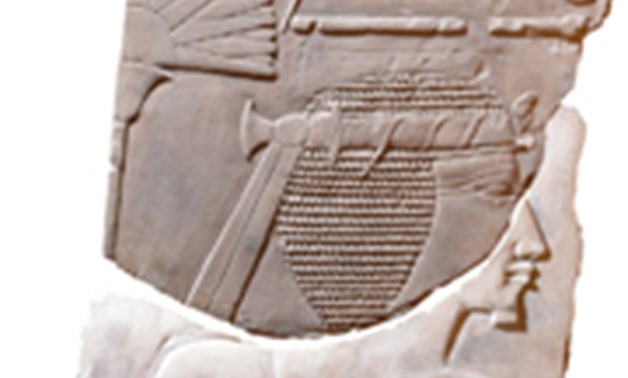
Discovered depiction of the Egyptian ruler Hatshepsut at Swansea University, Mar. 23, 2018 -Photo courtesy of the press office of Swansea University.
CAIRO – 26 March 2018: A depiction of one of the most renowned pharaohs in history, Hatshepsut, was found by Egyptology lecturer Kenneth Griffin at Swansea University, Friday.
During a recent handling session held for an Egyptian Art and Architecture module by Griffin to his university’s students, they discovered an object that consists of two glued limestone fragments featuring the Egyptian ruler Hatshepsut.
Hatshepsut ruled the empire in the 18th dynasty and was considered to be among just five women who held this position (c.1478–1458 BC).
The object had been kept in storage for over 20 years and was requested for the handling session based only on an old black and white photograph.
The front side of the discovered artifact depicts the head of a figure whose face is incomplete; also, the hieroglyphs inscribed above the head point out that this face is that of the Egyptian ruler. The hieroglyphs contain feminine pronouns.
As for the found object’s origins, the press office of Swansea University claim that the university received it in 1971 among Sir Henry Wellcome’s other belongings, the pharmaceutical entrepreneur based in London. The press office also stated that the fragment was obviously removed from a wall of a tomb or temple and this is according to the presence of cut marks on its back.
Graffin’s numerous visits to Egypt, enabled him to recognize easily the resemblance between this fragment and the depictions in the temple of Hatshepsut at Deir el-Bahri, Luxor.
Graffin said that the discovery of this significant object cause great excitement among the students who attended this session adding that such discoveries bring Egypt to them even for those who didn’t visit Egypt.

Comments
Leave a Comment